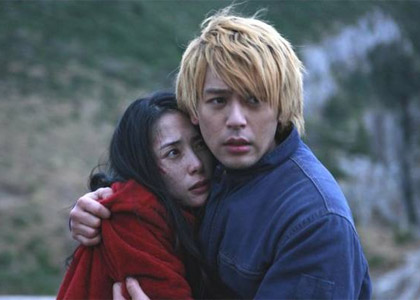WIT Life #177: 子ども手当から児童手当へ
WITLife is a periodic series written by professional Writer/Interpreter/Translator Stacy Smith (Kumamoto-ken CIR, 2000-03). She starts her day by watching Fujisankei’s newscast in Japanese, and here she shares some of the interesting tidbits and trends together with her own observations.
It’s been a bit of hisashiburi since I’ve written here, but it’s nice to be back. Recently our government has seen its share of wrangling regarding the debt ceiling issue, and there has been similar discord among Japan’s political parties regarding the 子ども手当 (こどもてあて, kodomo teate)or child allowance. Originally one of the DPJ’s key campaign pledges and put into law in April 2010, it granted a uniform 13,000 yen per month to parents with children up to the age of fifteen. However, it has just been announced that in order to prioritize financial resources for the country’s recovery, it will be eliminated in October when it expires.
Next April, this allowance will be replaced by Read More
Surviving in Japan: What is “Calorie Off” and Why Should You Care?
Posted by Ashley Thompson (Shizuoka-ken, 2008-2010) of Surviving in Japan: without much Japanese and Lifelines columnist for The Japan Times.
My time in Japan so far has seen many changes, as to be expected, and most have been gradual. One such change has been the increasing prevalence of “calorie off” drinks. When I first arrived I remember this option being available, but as the years have gone by some of my favorite beverages converted completely to “calorie off”, including my beloved lemon Mitsuya Cider… (I like CC Lemon too, but I prefer Mitsuya Cider).

Now, just browsing at the local コンビニ (convenience store), it is more difficult to find carbonated (and some non-carbonated) beverages that aren’t “calorie off.” Not that I drink much else aside water in general (and occasionally 100% juice or tea), but even if some new, “limited edition” beverage looks interesting to try I often don’t because it is, of course, “calorie off.”
So, what is “calorie off”? — CLICK HERE to read the rest of the post.
Tohoku update and perspectives by Japan Society of Boston President Peter Grilli
If you’ve been looking for good sources of on the ground reporting in Tohoku, you may appreciate the writing of Japan Society of Boston President Peter Grilli who just returned from three weeks in Tohoku. After March 11, JSB teamed up with The Boston Foundation and the Fish Family Foundation to create the Japan Disaster Relief Fund Boston.
Below are two reports by Peter for JSB as well as two for JDRFB.
- http://www.japansocietyboston.org/Tohoku
- http://www.japansocietyboston.org/Onagawa
- http://jdrfb.squarespace.com/blog/2011/7/19/transition-rescue-and-reconstruction-peter-grilli.html
- http://jdrfb.squarespace.com/blog/2011/7/12/report-from-onagawa.html
WIT Life #176: 悪人
WITLife is a periodic series written by professional Writer/Interpreter/Translator Stacy Smith (Kumamoto-ken CIR, 2000-03). She starts her day by watching Fujisankei’s newscast in Japanese, and here she shares some of the interesting tidbits and trends together with her own observations.
First off a huge OMEDETOU to the Japanese women’s soccer team for winning the World Cup over the weekend! I watched the game with the Japanese delegation I have just begun interpreting for, and needless to say it made our night. The victory has been a nice boost of encouragement for the country, and is something all of its citizens can take pride in.
The Japan Cuts film festival at Japan Society is going strong in its second and final week, and in my next few entries I hope to discuss some of the great movies I’ve been seeing. But today I’d like to talk about another interesting film that made its New York premiere when it was screened last week as part of the Nippon Eiga series sponsored by ANA. It was 悪人 (Akunin) or Villain, and featured the two amazing actors Satoshi Tsumabuki (as the villain) and Eri Fukatsu (as the woman who falls in love with him). It was directed by Sang-il Lee who also made Hula Girls, another movie that was screened as part of ANA’s series a few years back.
Fukatsu received the Best Actress award at the Montreal World Film Festival last year for playing this role, a worthy performance. She and Tsumabuki always have great chemistry (I loved them in Read More
Surviving in Japan: How to stay cool without air conditioning
Posted by Ashley Thompson (Shizuoka-ken, 2008-2010) of Surviving in Japan: without much Japanese and Lifelines columnist for The Japan Times.

冷風扇 or "cool air fan"
The last week or so has been rather hot (in central Japan at least), with temps here in Shizuoka hovering around 30 Celsius and up (high 80s to 90s Fahrenheit). My husband and I still don’t own an air conditioner, simply due to the costs involved with buying and installing one, and then periodic cleaning. Yet, being 33 weeks pregnant, I’ve been finding myself desperate for some kind of cooling alternative the past week or so.
I never really felt like I needed an aircon since arriving in Japan three years ago. I was happy to experience nice, hot summers. People tend to complain a lot about the summer heat in Japan (unless they live in Hokkaido), but I hate the cold so much that I’m usually relieved when summer comes around.
Until last summer anyway, when we had a record-breaking heat wave that lasted until October. Sitting and working at home was mostly tortuous, so I trekked to the nearest Starbucks a few times a week just so I could get some work done in an air-conditioned, non-smoking, wi-fi equipped environment.
And now we’re into summer 2011. Temperatures are already mirroring those of last year on some days. I’m making due the best I can, but all this extra blood running through my body and 10 extra kilograms seems to make me feel hotter than I felt even last year.
After feeling sick the other day from trying to work inside (and I do still try to get out in the afternoon and at least run errands to air-conditioned places), I was about ready to build my own air conditioner.
I found this article on how to construct a makeshift one with a fan, styrofoam box cooler, and ice, and was seriously planning to go find the materials. Regular electric fans weren’t working, even with multiple ones blowing from all directions to circulate air. Drinking ice water helped only a little, and I was hopping in the shower every so often for a quick spray of cold water.
And then my husband mentioned he’d heard about some kind of machine that blows cool air (no, not an aircon), known as 冷風扇 (れいふうせん, reifuusen), or 冷風機 (れいふうき, reifuuki), or “cool air fan/machine” as a loose translation.
Essentially, you put cold water and ice–CLICK HERE to read the rest of the post.
New Bruce Feiler column in the New York Times
Attached is a new New York Times column (“The Life (and Death) of the Party: Mastering the Art of Dinner Party Conversation“) by JET alum Bruce Feiler (Tottori-ken, 1989-90), author of Learning to Bow, The Council of Dads, and several books on the Middle East including Walking the Bible, Abraham and Where God Was Born.
To read prior columns, please click here.
Bruce’s new book GENERATION FREEDOM: The Middle East Uprisings and the Remaking of the Modern World has just been published. You can see some of his recent media appearances by visiting www.brucefeiler.com.
***************
This Life
The Life (and Death) of the Party
By BRUCE FEILER
Published: July 8, 2011
I CALL it my insufferability test. It came about like this: A number of years ago, I was seated at a dinner party next to the celebrated C.E.O. of an American brewery. I was the lesser player here, so I began asking him questions about his beer. Fifteen minutes passed, then 30. He didn’t ask me a single question.
As dessert approached, I began slumping in my chair from trying to come up with query after query about organic hops and fluctuating wheat futures. Finally, I started dropping in teasers from the year I spent as a circus clown. “My friend the human cannonball …”; “That reminds me of the time I once got into a cage with nine tigers.” Surely these would pique his curiosity. Needless to say, I never told a story about the circus that night.
To me that encounter was a warning shot. I was like a rookie pitcher being plastered in his opening outing in the big leagues. If I hoped to avoid similar dinner party fiascoes in the future, I had to raise my game. So what is the best formula for handling a loudmouth, know-it-all, bore or clam?
With summer entertaining season upon us, it seemed like a good time to brush up on my techniques, and perhaps pick up some new tricks. So with the help of some veterans of the tablecloth trenches, here are some tips for navigating dinner party pitfalls.
EAT AND GREET In ancient Rome, senators hired nomenclatorsto follow them around and introduce them to people. These days, each of us has to be his own nomenclator. A good host often performs this role. “A lot of dinners I throw often have a specific point to them,” said Sunny Bates, a former Silicon Alley headhunter turned networking guru. “I make everyone go around and say who they are, where they’re from and what they most need.” Other starter questions I’ve seen work: “If you could change one thing about the human body, what would it be?” and “What about you, physically, is perfect?” Knowing something about all the other guests is more than good manners; it can also come in handy if you’re seated next to a dud and need to seek relief in someone a few seats away. If I’m at an event with no host at the table, I’ll go so far as to walk around and briefly introduce myself to the other guests. Think of a dinner party as being like a crime scene: plan your escape route. Read More
Sake World e-Newsletter by John Gauntner (July 2011)
 The July 2011 issue of the Sake World e-newsletter by JET alum and the leading non-Japanese sake expert in the world, John Gauntner (a.k.a. “The Sake Guy”), is now available online.
The July 2011 issue of the Sake World e-newsletter by JET alum and the leading non-Japanese sake expert in the world, John Gauntner (a.k.a. “The Sake Guy”), is now available online.
Go to John’s Sake World website for more information as well: www.sake-world.com
WIT Life #175: Japan Cuts 2011
WITLife is a periodic series written by professional Writer/Interpreter/Translator Stacy Smith (Kumamoto-ken CIR, 2000-03). She starts her day by watching Fujisankei’s newscast in Japanese, and here she shares some of the interesting tidbits and trends together with her own observations.
The 2011 Japan Cuts Film Festival at Japan Society is back and better than ever, with a lineup of 32 films and 33 screenings in total. Like last year, I decided to volunteer in various roles such as ushering and ticket taking, as that allows you to stick around and enjoy the movies. The first movie I worked at was Love & Loathing & Lulu & Ayano (名前のない女たち) which was screened this past Friday night.
Director Hisayasu Sato, known as one of the “Four Heavenly Kings of Pink” for his work in ピンク映画 (pinku eiga) or soft-core porn films, incorporated his background into this movie released in Japan last year. It tells the story of a meek OL who is scouted in Shibuya to work in Read More
Video: “Tonoharu” explained in unique video by creator Lars Martinson
****************
Lars Martinson (Fukuoka-ken 2003-2006), author of the graphic novels Tonoharu: Part Two and Tonoharu: Part 1, has put together a rather unique video that “explains” the Tonoharu series in a marvelously tongue-in-cheek way. (BTW, does anyone know if there’s a Japanese term for “tongue-in-cheek”?)
Anyway, have a look at the video. I think it’s fair to say that no one has captured the JET/living in Japan experience in as intricate a way as Lars has:
JET alum Josh Zimmerman crafts a name for himself in ABC News article
Thanks to Gail Meadows (Hiroshima-ken, 2007-10), former Editor of the Hiroshima JET online newsletter The Wide Island View and current resident of metro Detroit for sharing this item about her former Wide Island View Co-Editor Josh Zimmerman (Hiroshima-ken).
According to an ABC News article titled “From Whittling to Knitting: How Modern Men Craft,”
Joshua Zimmerman’s creative outlet is tinkering with small electrical projects. The 28-year-old, fourth-grade teacher in Milwaukee makes Altoid tin USB chargers and flashlights, and small robots from toothbrush heads and solar battery chargers. His creations usually can be made with a few bucks and a few parts, often from recycling old electronics.
He simplifies ideas he finds online, assembles them in kits, and sells them from his online shop, Brown Dog Gadgets, and at Etsy. He also posts the instructions for all of his projects, most of which take under an hour for a novice and require a little metal soldering.
Here’s a description of the Altoids Solar iPhone/iPod/iPad Charger direct from Josh’s Brown Dog Gadgets website:
After weeks of sweat, blood, and soldering burns we’ve finally done it. We’ve made a solar charger for all the iProducts out there! Now you can charge up your iPhone, iPod, and even the iPad via the wonder of solar.
What separates this from our Solar Altoids USB Charger is that you can actually charge up those iProducts, which you’ll also find separates us from most solar USB chargers out there.
The charger works by recharging two high capacity rechargeable AA batteries through the included 4V solar cell. When you need to charge up your iPhone or iPod just plug it in via the three foot retractable cable. Then relax, because you deserve it
Features:
4V Solar Cell
2X High Capacity Rechargeable AAs (Between 2500-3000 mah)
3 Foot retractable charging cable.
Your choice of a fun Altoids tin.
Has been tested on and works with any iPod Classic, iPod Nano, iPhone, and iPad. We honestly went to a store and tried it out on all of the display models. We’re just happy that it works with our iPhone 4!
***iPods and iPhones will not directly charge up from the solar panel. You need to first charge up the internal AA batteries to a certain level before an iPod or iPhone will actually charge from it.
*******************
Hey Josh, any chance we could order some with the JETwit logo? :-)
Surviving in Japan: How to find cheese in Japan
Posted by Ashley Thompson (Shizuoka-ken, 2008-2010) of Surviving in Japan: without much Japanese and Lifelines columnist for The Japan Times.
Most expats in Japan know how difficult it can be, at times, to find cheese (and I don’t mean the Japanese types of cheese). Even when you do come across something like cheddar, it’s often more expensive and smaller in size than a giant block you could easily buy in the U.S., for example, for the same price. (And I’m sure size and cost of cheese varies by country all over the world). Strangely enough, ever since I got pregnant, minus the three weeks of smoothies and saltines, I’ve been craving various American-type foods (which I don’t normally crave very often). Lasagna and enchiladas especially. Ok, so those aren’t inherently American, but who are we kidding, how much food can the U.S. claim as its own? Aside the altered versions of food from other backgrounds… the kind of food that means “comfort” to me – like my aforementioned lasagna).
Now, both of those meals require a decent amount of cheese, and specialized in the case of ricotta cheese for lasagna. I can easily find cheddar, bagged parmesan and similar cheese at my local supermarket, though the amount of cheddar is quite small and costs around 500-700 yen. One of the closest import stores actually carries cheddar (and various other cheeses you won’t find at a local supermarket), and the cheddar blocks are twice as large and only cost around 400 yen (or more depending on the brand you get). Ricotta is impossible to find locally I’ve found (if different for you, please share below). One of two nearby import store carries ricotta, though for a hefty price at 900 yen (250 grams). Needless to say, lasagna will not be a frequent meal in our home (but it was worth it then).
Before we talk about how to find the cheese you want, let’s go over some cheese terminology – that is, Japanese translations. — CLICK HERE to read the rest of the post.
WIT Life #174: Saga Setting the Nuclear Standard
WITLife is a periodic series written by professional Writer/Interpreter/Translator Stacy Smith (Kumamoto-ken CIR, 2000-03). She starts her day by watching Fujisankei’s newscast in Japanese, and here she shares some of the interesting tidbits and trends together with her own observations.
Yesterday’s NYT had an interesting article about Japan’s nuclear policy going forward. Increasingly local governments are being depended on to determine this, though they believe these are decisions the central government should be making. Currently the debate is taking place in the rural prefecture of Saga located in Kyushu, where battle lines are drawn between nuclear power plant operators who insist their facilities are safe and wary citizens. In the middle is Saga governor Yasushi Furukawa who is being looked to for approval or rejection of restarting two of the four reactors at the plant. After being shut down for routine maintenance, the question is whether Read More
JET alums involved in yoga benefit for Japan quake victims (NY)
The below article mentions JETAA U.S.A. Country Rep and former JETAANY President Megan Miller-Yoo (Hyogo-ken). And the reporter, Seana Magee (Okayama-ken, Niimi-shi, 1988-90) also happens to be a JET alum.
FEATURE: New Yorkers turn on heat, use yoga to benefit Japan quake victims
By Seana K. Magee
NEW YORK, June 28, Kyodo
Drenched in sweat, Megan Miller Yoo and about a dozen other students were pushing themselves to new limits during a special Sunday yoga session held at a Manhattan studio.
Stretching their muscles and testing their flexibility, they intently followed the instructor moving through 26 prescribed poses at Bikram Yoga Grand Central in a humid, 40 C room.
From the outside it looked like an ordinary 90-minute Bikram class, but it was not.
The hot yoga devotees were part of a so-called donation class specifically designed to raise money to help victims of the earthquake and tsunami that hit northeastern Japan on March 11.
Yoo explained to Kyodo News how taking part in the special class took her practice to a new level, particularly because of her close ties to the country, where she lived for two years.
”One instructor always says, ‘If you breathe through Bikram, you can breathe through anything,’ so I often think of that when I am in a tough situation, and it makes me realize I can get through anything if I just hang in there and don’t give up,” said the 33-year-old former Japan Exchange and Teaching Program participant who taught English in Hyogo Prefecture.
”I think that is the perfect message for the people in the affected regions of Japan.”
Before the March disaster wreaked havoc in her country, Kyoko Katsura, one of the two studio owners, and her business partner were mulling over ways to motivate students. So they hit upon the idea of offering the weekly donation class to highlight various charities. Read More
Surviving in Japan: A Guide to Sunscreen in Japan
Posted by Ashley Thompson (Shizuoka-ken, 2008-2010) of Surviving in Japan: without much Japanese and Lifelines columnist for The Japan Times.
Just in time for summer (despite some of the gray days during the rainy season): an overview of sunscreen (or sunblock) in Japan.
I should note that I’ve heard various complaints about sunscreen tubes and bottles being relatively small here, and in many cases, this tends to be true. In my experience, women here often seem to prefer covering up their skin with clothing, hats, scarves, etc., carrying around an umbrella, and/or just avoiding being outside during the peak times of day. It’s not uncommon when stopped at an intersection to see pedestrians waiting under store eaves in the shade until the light turns green (though this is also just to get out of the heat). So I think one possible reason the quantities may be smaller is simply because they are primarily used on the face, neck, hands, and/or arms. Their small size also makes them easier to carry around.
As for men in Japan, it doesn’t seem that protecting their skin from the sun is as popular as it is with women. I’m sure some do, but women seem to be more concerned about this (in general, of course does not apply to everyone) and in general, sunscreen in Japan seems to be marketed more towards women.
First of all, sunscreen or sunblock in Japanese is: 日焼け止め (ひやけどめ, hiyakedome)
Other words to know:
紫外線 しがいせん ultraviolet rays
耐水性 たいすいせい water resistant
ウォータープルーフ waterproof
無香料 むこうりょう unscented
無着色 むちゃくしょく no coloring
Understanding UVA/UVB protection
Every country has its own form of indicating a sunscreen’s effectiveness against UVA and UVB rays, though the use of “SPF” is fairly standard.
Japan uses SPF to measure protection against UVB rays. You’ll see standard numbers such as 15, 30, 50, etc.
Protection against UVA rays is indicated in Japan as “PA” with a plus sign (+). There are no numbered measurements for this; more pluses equals more protection. You’ll find 3 versions: — CLICK HERE to read the rest of the post.
WIT Life #173: Homeless by mandate
WITLife is a periodic series written by professional Writer/Interpreter/Translator Stacy Smith (Kumamoto-ken CIR, 2000-03). She starts her day by watching Fujisankei’s newscast in Japanese, and here she shares some of the interesting tidbits and trends together with her own observations.
Almost four months have passed since the earthquake/tsunami hit Japan, and one might think that after this amount of time things have gotten back to some semblance of normal. That seems to be the case for the most part in Tokyo, where except for limited electricity usage and the omnipresent uncertainty regarding radation levels, it is back to business as usual. However, for those who lived in the disaster area, it is a different story. I recently spoke to a close friend over Skype, who told me about her brother who had lived with his family in Tohoku.
They, like many others from the disaster zone, cannot be cleared to return home due to restrictions on entering areas that exceed a certain level of radiation. Instead, they have spent the last few Read More


